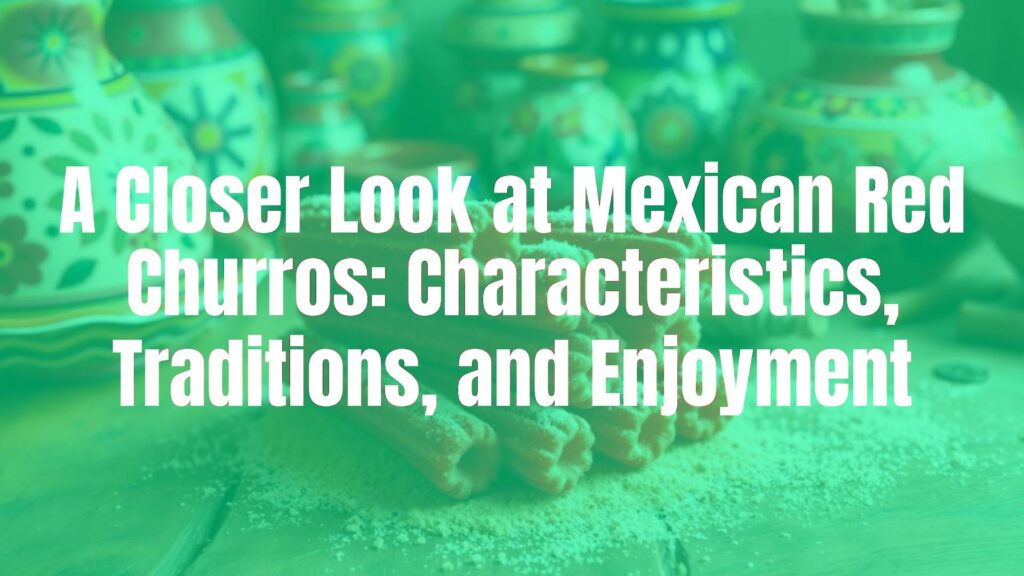Introduction to Mexican Red Churros
Among the many tasty variations of churros, Mexican red churros stand out for their vivid color and rich cultural identity. Unlike traditional churros, these treats are known for their striking reddish hue, achieved through unique flavorings or colorants. Mexican red churros are more than just a vibrant dessert; they represent the ongoing creativity and adaptation within Mexican confectionery traditions.
Defining Characteristics
Mexican red churros maintain the classic spiral or stick shape associated with churros, but their surface displays a lively red color. The dough’s crisp exterior gives way to a slightly chewy and tender center. The characteristic cinnamon-sugar coating is often adapted with the addition of subtly spicy or fruity notes, depending on local preferences. Visually, their bold color makes them a festive option for fairs, markets, and family gatherings.
Cultural Origins and Significance
Churros as a general concept were introduced to Mexico from Spain, but over centuries, Mexican communities have made the treat their own. The red churro is a contemporary creation, most commonly associated with urban markets and street fairs, where experimental takes on classic snacks are celebrated. The color red is symbolic in Mexican cuisine, often signifying celebration and vibrancy, especially during holidays and local festivities.
Key Ingredients
While the base ingredients resemble those in standard churros—flour, water, butter, and eggs—Mexican red churros incorporate red food coloring or sometimes natural alternatives like beet juice. A pinch of salt and sometimes a bit of vanilla can enhance the flavor. After frying, they are rolled in a cinnamon-sugar mixture which may be blended with a hint of chili powder or other spices for enhanced depth and a subtle warmth.
Popular Variations
The red churro’s flavor profile can range from neutral to slightly tangy or spicy, depending on local trends. Some versions are stuffed with strawberry or raspberry filling to complement the reddish theme, while others incorporate spicy-sweet combinations by adding ground chili to the sugar mix. Icing, cream cheese dips, or chocolate sauces are common accompaniments in urban areas.
Ingredient Substitutions
For those wishing to avoid artificial dyes, natural alternatives such as beetroot powder or hibiscus concentrate provide both color and a mild earthy or floral undertone. Dairy-free versions can substitute plant-based butter and milk, preserving the classic churro texture while catering to broader dietary preferences.
Serving and Pairing Suggestions
Mexican red churros are often enjoyed warm, fresh from the fryer. They pair beautifully with traditional Mexican drinks like atole, Mexican hot chocolate, champurrado, or a refreshing glass of horchata. For a celebratory twist, they can be served alongside ice cream or as part of a festive dessert platter during holidays and gatherings.
Conclusion
Mexican red churros encapsulate the playful spirit and culinary adaptability of Mexican street food culture. Their vibrant color and flavorful twists make them a delightful treat that appeals to all ages, whether at a bustling market stall or as the centerpiece of a festive dessert table.

